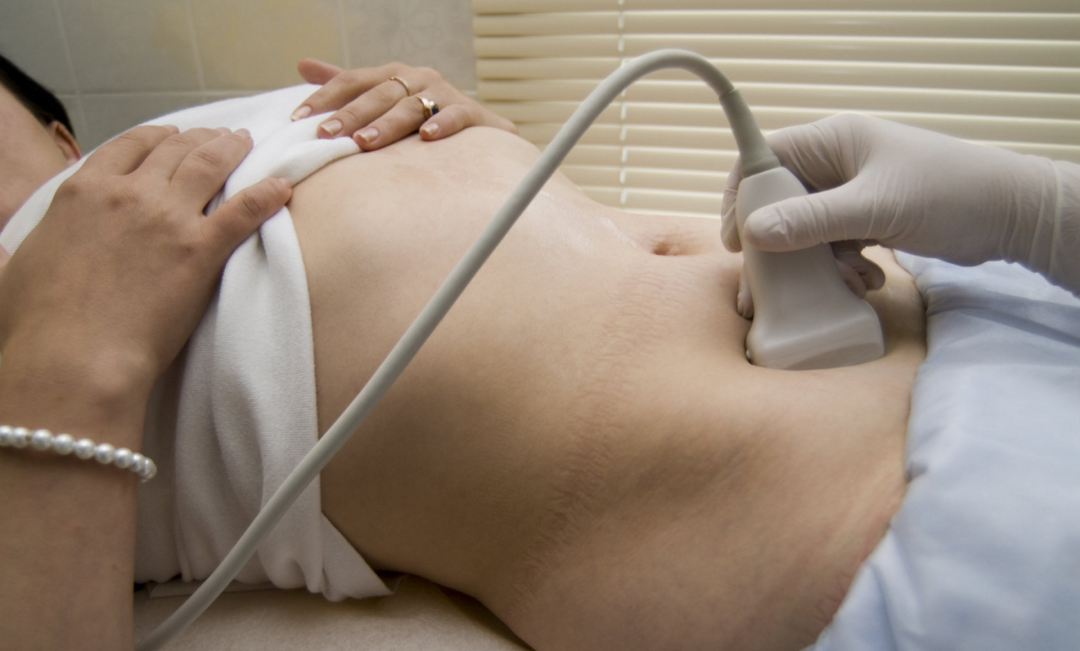Renal colic - forms, causes, symptoms and treatment
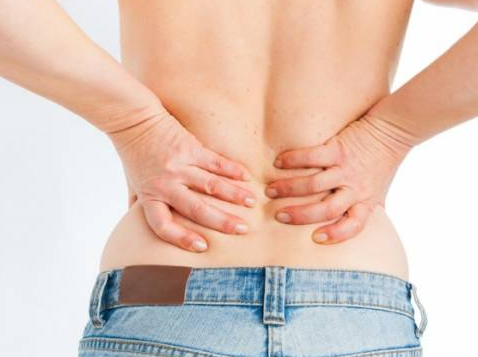
Acute pain of a spontaneous nature in the kidney in medicine is classified as renal colic.Such an attack is a consequence of a violation of outflow of urine or acute impairment of blood circulation in the kidneys.Most often, renal colic is diagnosed against a background of urolithiasis.
Contents: forms of renal colic Causes of renal colic symptoms of renal colic diagnosis of renal colic treatment of renal colicforms of renal colic
kidneys - a paired organ, so there are three forms of renal colic:
- Left-sided - allThe symptoms will be intensively expressed on the left side, but irradiation to the right lumbar region may also be present.
- Right-sided - the severity of the symptoms is noted on the right side, irradiation to the left lumbar region is allowed.
- Bilateral - all symptoms are pronounced, the patient can not clearly indicate the localization of a pain attack.
Regardless of what form of renal colic occurs, the symptoms, causes and medical care will be identical.
Causes of renal colic
Viewed syndrome can not appear by itself - it is solely the result of a pathological process in the body. Doctors distinguish several diseases that can trigger the development of renal colic:
- progressive kidney tumors;
- kidney trauma;
- stones in the kidneys or ureters - urolithiasis;
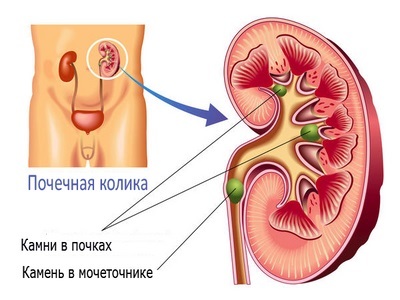
- malignant / benign tumors located near organs - rectum, uterus, prostate, but only if there is a spread in the ureter;
- narrowing of the urethral lumen - stricture of the urethra;
- Kidney descent - nephroptosis;
- benign / malignant tumors of the bladder;
- kidney tuberculosis;
- ureteral lumen narrowing - ureter stricture.
symptoms of renal colic
The only symptom that is always expressed clearly and arises spontaneously, in renal colic is severe pain - it is so intense that even strong men faint. But apart from this syndrome for the disease in question is characterized by:
- irradiation of pain in the groin, perineum, or side with the opposite side of the diseased kidney;
- nausea and vomiting - the second is extremely rare;
- in the urine there is blood;
- unstable stool - the patient can have either diarrhea or constipation;
- absence of urine excretion - this occurs only with renal colic in a single kidney( the second, for example, was removed) or with bilateral colic;
- rapid urination - possible only if there is an obstruction of urinary outflow in the ureter( in its lower part).
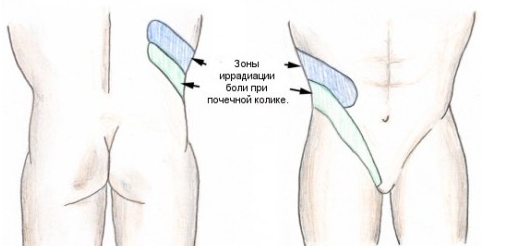
diagnosis of renal colic
Despite the strongly expressed symptoms of the disease in question, at the first of the above symptoms should immediately seek medical help.And the doctor will not diagnose solely from the patient's words - he will appoint a full-fledged examination. As part of the diagnostic activities,
- is conducted. Interrogation of the patient.The following issues are clarified:
- is there a history of inflammatory / infectious diseases of the kidney and / or urinary tract;
- was there previously a kidney injury;
- is there a history of urolithiasis;
- as a long time there was a sharp pain in the anatomical location of the kidneys( or one of them);
- whether the operative interventions on the kidneys were postponed in the recent past.
- Inspection of the patient.The urologist performs palpation of the abdomen - possibly revealing painful ureteral dots: a projection of the anatomical location of the ureters on the anterior wall of the abdomen.In addition, it is advisable to carry out a series of light beatings in the area of the anatomical location of the kidneys from the back - this can provoke an increase in pain.
- Laboratory research.This procedure necessarily takes blood - it will reveal an increase in the level of creatinine and leukocytes( this will be a sign of the development of an acute inflammatory process), as well as a high urea content - a toxic substance that, when the kidneys are normal, is excreted from the body.In the study of urine, experts identify the presence of red blood cells - red blood cells.
- Instrumental research.The following procedures are implied:
-
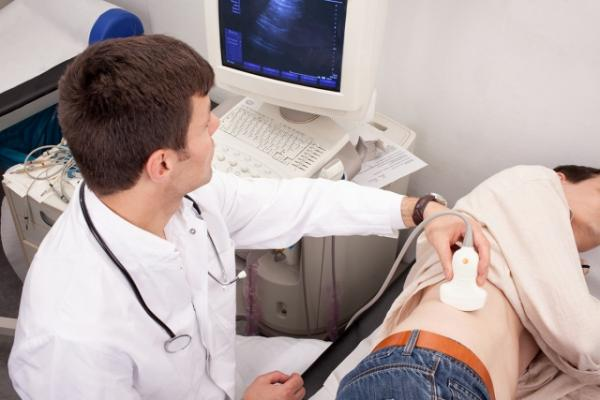 ultrasound examination - a specialist reveals the presence of stones in the kidneys or ureters, pathological changes in the structure of the organ tissues;
ultrasound examination - a specialist reveals the presence of stones in the kidneys or ureters, pathological changes in the structure of the organ tissues; - excretory urography - with the help of a contrast agent, X-rays are obtained, which will show narrowing of the ureter or the presence of a stone;
- computed tomography of the kidneys, bladder and ureters - the structure of the tissues of all these organs is layer by layer.
Only after receiving all the results of such a complete examination the physician can prescribe the treatment of the disease in question.
Treatment of renal colic
This condition is the result of the progression of a disease, therefore, first of all, it is necessary to conduct a comprehensive treatment of the underlying pathology.But renal colic will not allow the patient to wait patiently for the results of drug therapy - acute pain forces to act in an emergency.
Doctors to reduce the intensity of pain in renal colic recommend:
- Take a warm bath or attach a warmer to the waist - this will help relax the muscles, reduce the acute sensation.
 Note: should never be used for warming up procedures if the body temperature is elevated or benign / malignant tumors were previously diagnosed.
Note: should never be used for warming up procedures if the body temperature is elevated or benign / malignant tumors were previously diagnosed.
- Take painkillers and / or anti-inflammatory medications, but only if they were previously prescribed by your doctor.
- Take antispasmodic medications - they will help relieve spasm in the ureter, relax the muscles.But again - this recommendation is appropriate only if the patient has previously been prescribed similar remedies by the attending physician.
- Drink plenty of liquid - this can be ordinary water( boiled and in a warm form), broth of wild rose, compote of dried fruits, but it is strictly forbidden to drink mineral water and sweet fizzy drinks.

It is necessary to urinate in a special container or on a cheesecloth - this will help to immediately detect a stone that has emerged from the kidney / ureter.
Note: if the above actions do not bring relief, a large amount of blood has appeared in the urine, a feeling of nausea has increased, vomiting has opened - this means the need to seek immediate medical attention.
Surgical treatment
Surgical intervention in the present condition is advisable to be performed only in specific cases. These include:
- hydronephrosis;
- urolithiasis, which occurs with complications;
- no effect for 1-3 days after taking medications;
- stone more than 1 cm in diameter, which within 3 days after the onset of colic did not come out on its own.
Due to the fact that most often renal colic occurs against the background of urolithiasis, the surgeon's task is to remove the stone operatively.
Treatment of renal colic folk remedies

If renal colic occurs not for the first time, then the patient already knows perfectly what to do and how to do to relieve the condition.In addition to specific drugs, you can remove a strong pain attack and folk methods. The effective remedies for renal colic include:
- Field horsetail.It is ground, poured with steep boiling water in the proportion of 2 tablespoons of horsetail per 500 ml of water, insist for 30 minutes in a warm place.Then the broth is poured into a warm bath - the time of the procedure is 20 minutes.The same broth can be consumed and inside - for ¼ cup 3 times a day.
Note: should start taking the horsetail broth inside immediately after the first attack of renal colic, and even after the attack ceases, a stone will leave the kidney or ureter, stopping the use of this medication is not necessary - for another 2 daysDrink at the suggested dosages.
- Radish and honey.You need to get radish juice - for this, grate the vegetable on a fine grater( or grind it in a blender) and wring it out in the gauze.Then juice and honey mix in a proportion of 1: 1 and take a tablespoon every 60 minutes.
- Herbal collection.It is necessary to take 1 tablespoon of dried chamomile, sage and centaury, mix and pour 300 ml of steep boiling water.The drug is infused for 1 hour in a warm place, taken 1 teaspoon every 90-120 minutes.
Please note: recommends the same herbal remedy for the treatment of many diseases of the kidney and urinary system.If you take it regularly, then one course should not exceed 3 weeks, then necessarily you need to take a break in 10 days.And in this break, in any case, you can not use this remedy, even for the removal of an attack of renal colic.
Prevention of renal colic
In order to prevent the development of this condition, experts recommend:
- to consume enough vitamins A and D;
- regularly replenish calcium stores in the body - this is done with the help of special vitamin-mineral complexes;
- a day you need to use at least 2 liters of water - it is about pure water, in the calculation does not take the juice, compotes and first courses;
- diagnosed kidney and urinary system diseases must be treated;
- does not exclude exercise.
Avoid:
- supercooling;
- low-activity lifestyle;
- consuming alcoholic beverages;
- of urological infections;
- of any viral diseases;
- trauma of the lumbar region in the anatomical location of the kidneys;
- drafts.
If a patient has previously been diagnosed with urolithiasis, then he should strictly follow the prescriptions / recommendations of doctors - for example, observe a strict diet.
Renal colic is a serious enough syndrome that involves receiving medical care.Usually, when such a syndrome manifests itself for the first time, patients voluntarily literally "run" to the doctors.But if renal colic has become almost a habitual matter, do not hurry to the medical institution.You can, of course, ease your condition and at home, but if unusual symptoms were noted( a lot of blood in the urine, too much pain before a brief loss of consciousness, ineffectiveness of painkillers), then this should be the reason for seeking help from specialists.
Tsygankova Yana Aleksandrovna, medical reviewer, therapeutist of the highest qualification category.


